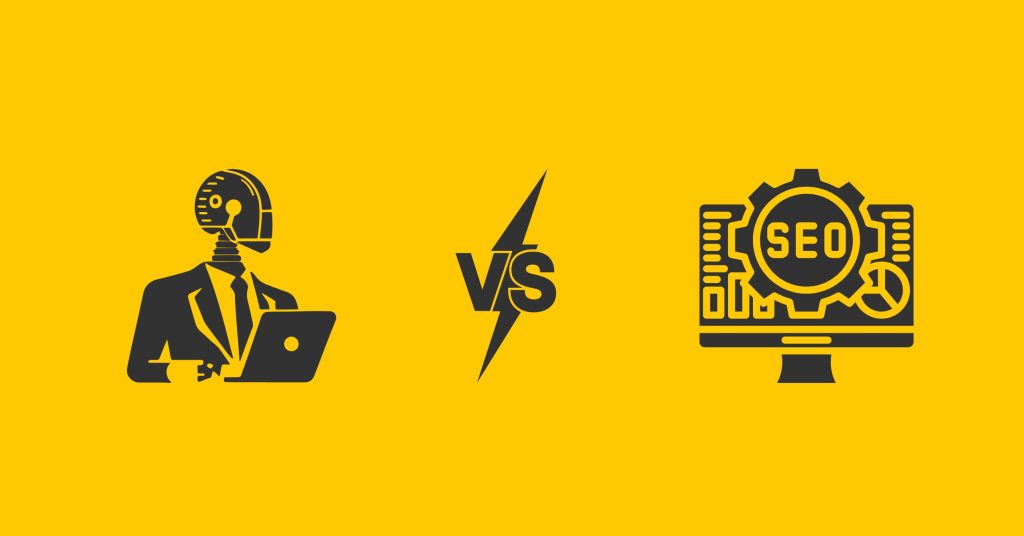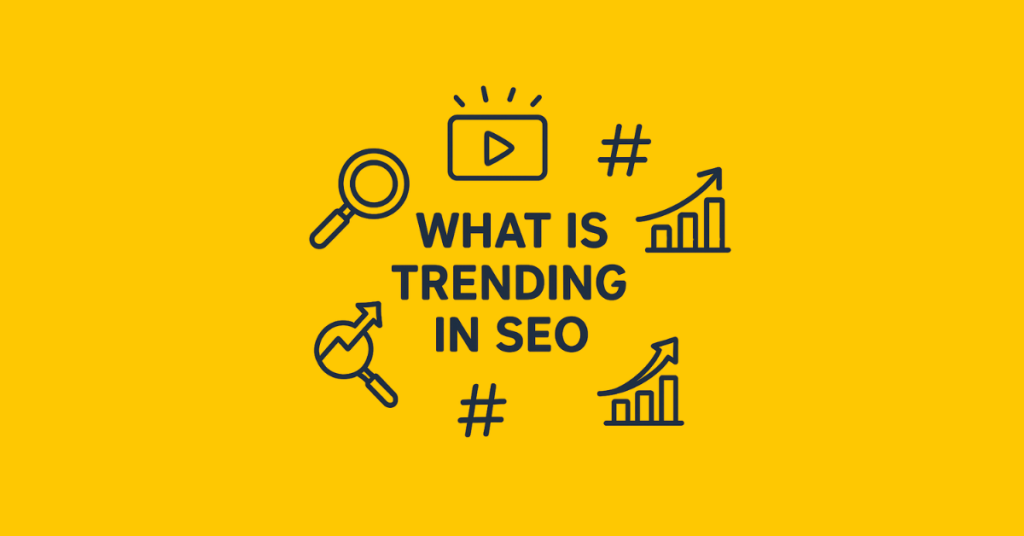By 2025, over 50% of internet users will have interacted with AI-powered search tools, fundamentally changing how we discover information online.
Search is no longer about scanning through ten blue links on a results page—it’s about receiving direct, synthesized answers from intelligent systems that understand context and intent.
This evolution has given birth to Generative Engine Optimization (GEO), a strategy focused on optimizing content for AI-driven search engines rather than traditional geographic targeting.
This guide will explore how these optimization strategies differ, overlap, and work together to maximize online visibility.
Understanding both approaches is beneficial—it’s essential for maintaining a competitive advantage in today’s AI-driven search environment.
GEO vs SEO: Critical Differences
The fundamental distinction between SEO and GEO lies in their target platforms and optimization approaches.
While SEO focuses on traditional search engine rankings, SEO emphasizes becoming a trusted source for AI-generated responses.
| Feature | Search Engine Optimization (SEO) | Generative Engine Optimization (GEO) |
|---|---|---|
| Primary Target | Traditional Search Engines (Google, Bing SERPs) | AI-powered Search Engines & Generative AI Models (SGE, ChatGPT) |
| Main Goal | Rank high in results pages, drive clicks | Be a trusted source for AI, appear in synthesized answers |
| Content Focus | Keyword-centric, skimmable, link-worthy | Context-rich, factual, authoritative, conversationally aligned |
| Keyword Strategy | Focus on specific keywords and search volume | Emphasis on long-tail, conversational queries, user intent |
| Role of Links | Crucial for authority and ranking (backlinks) | Citations and links to authoritative sources build trust with AI |
| Success Metrics | Rankings, CTR, organic traffic, bounce rate | AI citations, accuracy in AI answers, share of voice in AI summaries |
| User Interaction | User clicks a link to visit a webpage | User gets a direct answer, potentially with cited sources |
Understanding both approaches isn’t just beneficial—it’s essential for maintaining competitive advantage in today’s AI-driven search environment, especially as AI SEO agents become more sophisticated.
GEO vs SEO – Similarities and Overlaps
Despite their differences, SEO and GEO share several foundational principles:
- High-Quality Content is King: Both strategies demand valuable, well-researched, and user-focused content that addresses real needs and questions.
- Understanding User Intent: Success in both areas requires deep comprehension of what users actually want when they search, not just what keywords they use.
- E-E-A-T Principles: Experience, Expertise, Authoritativeness, and Trustworthiness are crucial for both traditional search rankings and AI model trust.
- Technical Soundness: A well-structured, fast-loading, and accessible website benefits both traditional crawlers and AI systems.
- Schema Markup: Structured data helps both search engines and AI models better understand and categorize content.
What is Search Engine Optimization (SEO)?
Search Engine Optimization represents the established practice of optimizing websites and content to achieve higher rankings in traditional search engine results pages.
SEO focuses on making content discoverable and valuable to search engine algorithms and human users.
The primary goals of SEO include increasing organic website traffic, improving visibility for target keywords, enhancing brand awareness through search presence, and ultimately driving qualified leads and conversions.
Here’s an example of asking a query on Google – Best US President:
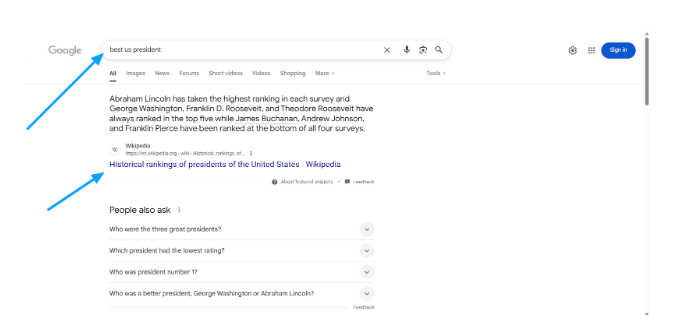
This provides a direct first-ranking response without much support of resources.
SEO operates through several key pillars:
- Keyword Research: Involves identifying terms and phrases your target audience uses when searching for information, products, or services related to your business.
- On-Page SEO: Optimizes individual web pages through strategic keyword placement, meta descriptions, header tags, and internal linking structures.
- Off-Page SEO: Focuses on building authority through external signals, primarily high-quality backlinks from reputable websites.
- Technical SEO: Ensures search engines can efficiently crawl, index, and understand your website through proper site architecture, loading speeds, and mobile optimization.
- User Experience (UX): addresses factors like page loading times, mobile responsiveness, and intuitive navigation that impact both search rankings and user satisfaction.
Traditional SEO success is measured through metrics like — keyword rankings, click-through rates, organic traffic volume, bounce rates, time spent on pages, and conversion rates.
Understanding these SEM best practices becomes crucial for comprehensive search marketing success.
What is Generative Engine Optimization (GEO)?
Generative Engine Optimization represents a paradigm shift toward optimizing content for AI-powered search engines and generative models.
Rather than competing for position in a search results list, GEO focuses on becoming the trusted source that AI systems reference when generating comprehensive responses.
The primary objectives of GEO focus on establishing your content as a trusted source that AI systems regularly reference when generating responses.
Rather than simply ranking in search results, GEO aims to make your content an integral part of AI-generated answers, ensuring accurate brand representation and direct visibility in synthesized summaries.
When asked the same question to ChatGPT, the AI’s response summarizes its research and how it reached the answer.
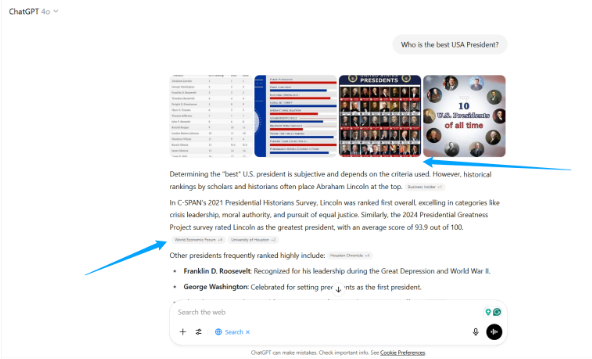
This gives more background to what went beyond with displaying this answer.
GEO operates through distinct optimization pillars:
- Content for AI Comprehension: involves structuring information in clear, factual formats that AI systems can easily parse and understand.
- Enhanced E-E-A-T: becomes even more critical as AI models prioritize content from sources demonstrating genuine expertise and authority.
- Semantic Relevance and Contextual Depth: require comprehensive coverage of topics with related concepts and entities clearly defined.
- Conversational Language and Long-Tail Keywords: align with how users naturally interact with AI systems through questions and dialogue.
- Citations and Authoritative Source References: Build credibility by connecting content to established, trustworthy sources.
- Structured Data and Schema Markup: help AI systems understand content context and relationships.
- Multimodal Content Integration: provides AI with diverse content types to enhance response comprehensiveness.
GEO success metrics differ significantly from traditional SEO, focusing on how often AI systems cite your content and how accurately they represent your brand.
Key measurements include your share of voice in AI-generated summaries, visibility for conversational queries, and the indirect impact on overall brand authority and user trust.
What is SGE?
Search Generative Experience (SGE) or AI Overview as it is popularly known, represents Google’s implementation of AI-powered search. It provides users with comprehensive, synthesized answers at the top of search results.
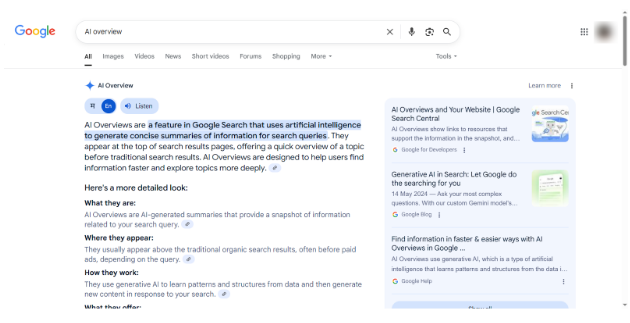
SGE pulls information from multiple sources to create cohesive responses, fundamentally changing how users interact with search results and making GEO optimization increasingly important.
When to Focus on SEO? (And Why It Still Matters)
Traditional SEO remains crucial for several key scenarios and continues to provide fundamental value, as highlighted in the key SEO trends shaping the digital landscape.
SEO is the foundation of discoverability in traditional search, ensuring your content can be found through conventional search queries.
Many users still prefer browsing search results and clicking through to websites rather than relying solely on AI-generated responses.
- Direct organic traffic generation
This remains a primary benefit of SEO, particularly for users who want to explore websites comprehensively, make purchases, or engage with interactive content that requires full website functionality.
- Building website authority
Through SEO practices indirectly benefits GEO efforts, as AI systems often prioritize content from established, authoritative domains when generating responses.
- Local search optimization
Continues to rely heavily on traditional SEO principles, making it essential for businesses with physical locations or service areas.
- Specific keyword targeting
For high-intent, commercial keywords often perform better through traditional SEO approaches, particularly for product pages and service offerings.
When to Prioritize GEO?
GEO becomes essential in several contemporary search scenarios reflecting evolving user behavior and technological capabilities, aligning with the industry’s current SEO trends.
1. Future-proofing content strategy
This requires GEO implementation as AI-powered search tools become increasingly prevalent across platforms and devices.
2. Being part of direct answers
The next one becomes crucial for informational queries where users seek immediate, comprehensive responses without visiting multiple websites.
3. Influencing AI understanding
Your brand, expertise, or industry positioning requires GEO optimization to ensure accurate representation in AI-generated content.
4. Complex and conversational queries
When you need to cover multiple variables or require nuanced explanations, you benefit significantly from GEO optimization.
5. Building thought leadership and trust
The AI era demands content that AI systems recognize as authoritative and worth referencing in generated responses.
How Can SEO and GEO Work Together?
Rather than competing strategies, SEO and GEO function as complementary approaches that strengthen overall search visibility when implemented together.
1. SEO contribution
- SEO builds the foundation for GEO success by establishing website authority and credibility. Authoritative websites with strong SEO foundations are more likely to be trusted by AI systems when selecting sources for generated responses.
- High-ranking content from SEO efforts often signals credibility to AI models, increasing the likelihood of citation and reference.
2. GEO contribution
- GEO enhances SEO performance by improving content quality and user experience factors that search engines value. AI-optimized content typically features better structure, clearer explanations, and more comprehensive coverage of topics—all factors that benefit traditional SEO rankings.
- Holistic content strategy integration involves creating comprehensive content that serves both keyword-focused searches and conversational queries.
This approach leverages structured data for both traditional search engines and AI systems while maintaining universal focus on E-E-A-T principles.
Practical example demonstrates this synergy
- A well-researched, authoritative blog post optimized with strategic keywords (SEO) that also provides clear, citable answers and comprehensive topic coverage.
- (GEO) performs better across all search platforms than content optimized for only one approach.
Practical Steps to Integrate GEO into Your Existing SEO Strategy
Implementing GEO alongside existing SEO efforts requires systematic adjustments to content creation and optimization processes.
- Audit and elevate content quality by reviewing existing content for accuracy, depth, and clarity. Ensure all factual claims are supported by credible sources and that explanations are comprehensive yet accessible.
- Emphasize E-E-A-T principles by clearly establishing author expertise, incorporating credible source citations, and building overall site trustworthiness through consistent, high-quality content publication.
- Address common questions related to your topics, use natural language patterns, and provide comprehensive coverage of related concepts and entities to optimize for semantic search and user intent.
- Implement robust schema markup to help both search engines and AI systems understand content structure, relationships, and context.
- Structure content for both AI and human consumption using clear headings, bulleted lists, question-and-answer formats, and logical information hierarchy.
- Encourage citations and mentions by producing original research, unique insights, and referenceable data that other content creators and AI systems will want to cite.
- Monitor AI-generated responses to understand how your brand and content are being represented across various AI platforms and adjust optimization strategies accordingly.
Can You Track Your GEO Metrics Like SEO?
The measurement landscape for GEO is rapidly evolving, with traditional SEO tools beginning to incorporate AI-focused analytics capabilities.
Leading platforms like Semrush have started providing ChatGPT traffic data and insights, allowing marketers to track how their content performs in AI-generated responses.
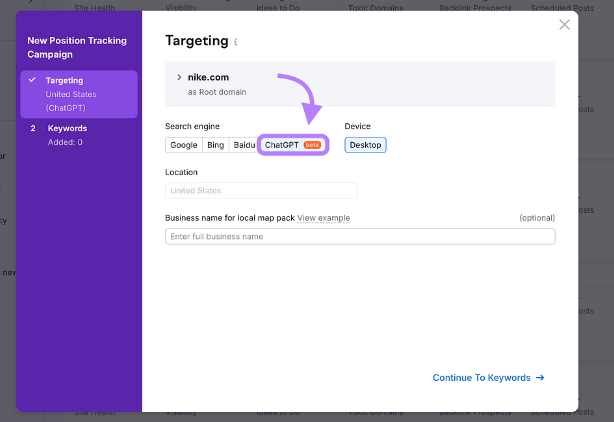
These tools offer visibility into which pages are being referenced by AI systems, the frequency of citations, and the context in which content appears in AI responses.
For those interested in exploring Semrush’s capabilities further, understanding why Semrush remains a valuable tool can provide additional insights into leveraging these features.
However, GEO measurement remains more complex than traditional SEO metrics because AI systems don’t always provide transparent attribution or consistent tracking opportunities. The field continues to develop new methodologies and tools for comprehensive GEO performance analysis.
History of SEO
SEO has evolved significantly since the early days of search engines, adapting to technological advances and user behavior changes.

- 1990s – Early Search Era: Basic keyword matching and directory listings dominated search, with minimal algorithmic complexity.
- 2000s – Algorithm Sophistication: Google’s PageRank algorithm introduced link-based authority, while updates like Florida (2003) and Panda (2011) began penalizing manipulative practices.
- 2010s—User Experience Focus: Mobile-first indexing, Core Web Vitals, and machine learning algorithms like RankBrain emphasized user experience and understanding of search intent.
- 2020s – AI Integration: BERT updates and passage indexing demonstrated search engines’ growing ability to understand natural language and context.
- 2024-2025 – Generative Search: The emergence of SGE and AI-powered search tools marks the beginning of the GEO era, requiring new optimization approaches alongside traditional SEO methods.
Those looking to deepen their SEO understanding can benefit from exploring Semrush Academy learnings to stay current with these evolving practices.
The Future of Search: SEO + GEO
The search landscape continues evolving toward a hybrid model combining traditional result listings with AI-generated responses, making SEO and GEO essential for comprehensive visibility.
Continued evolution will likely blend traditional search results with AI-powered answers, requiring marketers to optimize for both visibility channels simultaneously.
Adaptability remains key as search technologies continue advancing, with successful marketers maintaining flexibility in their optimization approaches.
Recent developments at Google I/O 2025 and similar industry events continue showcasing the integration of AI capabilities into traditional search platforms, reinforcing the need for dual optimization strategies.
User-centricity prevails across both optimization approaches, with success ultimately depending on providing valuable, accurate, and helpful information regardless of the delivery platform.
The ultimate goal remains achieving visibility and relevance wherever users search, whether through traditional result pages or AI-generated responses.
Conclusion: GEO Is The New Way To Follow
The distinction between SEO and GEO reflects a fundamental shift in how users discover information online. While SEO drives website traffic through traditional rankings, GEO prioritizes becoming a trusted source for AI-generated answers.
These strategies work together — SEO builds foundational authority that attracts AI systems, while GEO optimization improves user experience factors, benefiting traditional rankings.
Marketers integrating both approaches will maintain competitive advantages over traditional methods alone.
Start evaluating your content through both lenses, identifying opportunities to enhance material for AI visibility while maintaining search performance. Today’s dual optimization investment determines tomorrow’s search visibility.
FAQs
GEO will not replace SEO entirely as both strategies serve different purposes and user behaviors. The most effective approach combines both strategies for comprehensive search visibility across traditional and AI-powered search platforms.
Emerging GEO tools include HubSpot’s AI Search Grader, Semrush’s ChatGPT analytics features, and specialized platforms that monitor AI citations and brand mentions. Traditional SEO tools are also incorporating GEO-focused features to track AI-generated response visibility.
GEO results can appear more quickly than traditional SEO, sometimes within weeks of optimization. However, building consistent AI visibility and trust takes several months of producing high-quality, authoritative content.
Content that answers specific questions with clear, factual information and includes authoritative citations performs best for GEO. FAQ sections, how-to guides, and comprehensive topic overviews with structured data are particularly effective for AI systems.
Basic GEO implementation requires minimal technical skills and focuses primarily on content quality and structure. However, advanced GEO strategies involving schema markup and structured data may benefit from technical expertise or developer support.




